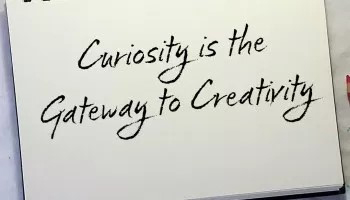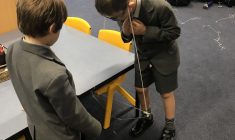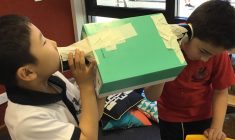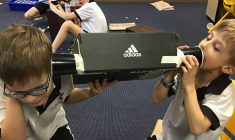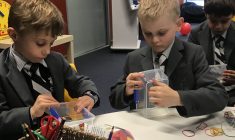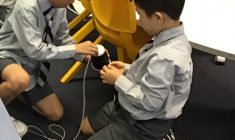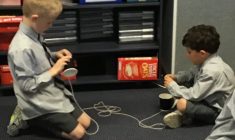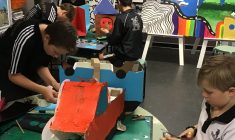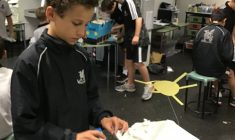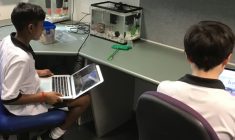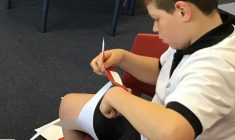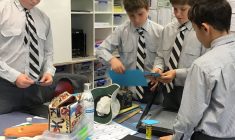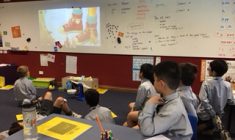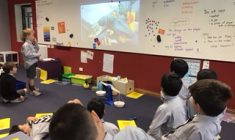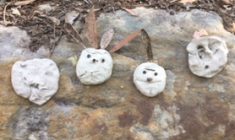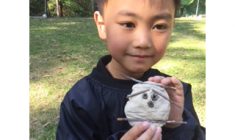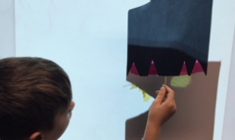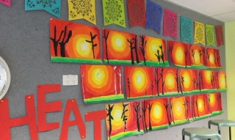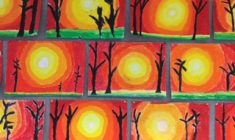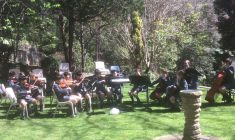From the Head of Lindfield
IS THERE TOO MUCH PRESSURE ON CHILDREN TO BE EXCEPTIONAL?
Three years ago I came back from living with my family in West Papua. It was one of the best experiences of our lives. After four years however, we felt that our children’s education was not scaling any great heights and they had reached an age where being part of a larger community and having the opportunities to try new things in school, sport and music would be fantastic. Through good fortune the job at Newington College was posted and so Sydney was our next destination.
The last three years have been everything we hoped for as a family. The opportunities and the community have been fantastic for ourselves and our three children, Sydney is an incredible city to live in.
As a parent and an educator, my only concern is the pressure that some children and families may feel to be exceptional. The way some children are tutored, coached and pushed to be exceptional and the pressure that parents feel to keep up with others in Sydney is often likened to an arms race with children’s achievement as one of the measures. Sometimes it can feel, that in Sydney, not being exceptional is tantamount to failure.
Jeffrey Kluger wrote about this syndrome in a Time Magazine article called “In Praise of the Ordinary Child”. He cited the American context but it had a lot of resonance to what we see with young people here in Sydney.
Jeffrey Kluger wrote some kids “are being fed a promise, – that they can be tutored and coached, pushed and tested, hothoused and advanced-placed until success is assured… Somewhere between the self-esteem building of going for the gold and the self-esteem crushing of the win at all costs ethos there has to be a place where kids can breathe, where they can have the freedom to do what they love – and where parents accustomed to pushing their children to excel can shake off the newly defined shame of having raised an ordinary child.”
Among achievement-obsessed parents, there’s a virtual contagion, says Harvard lecturer/activist Richard Weissbourd. “You see it in this arms race to get kids into selective schools. Kids who are strong academic achievers getting tutored from an early age, so you think you’re denying your own kid if you don’t do the same…”
Step one, says Kluger, is accepting that there is a downside to force-marching young people to very high achievement. “You can sign your kids up for soccer camp or violin immersion all you want,” he says, “but if they’re simply doing what they’re told instead of doing what they love, they’ll take it only so far.” Sometimes coaches or teachers see a spark of talent in gymnastics or dance or chess and push young people too hard, forcing them to focus prematurely and snuffing out the intrinsic motivation. When genuine interest flags, that’s a signal for parents, coaches, and teachers to back off. “Kids can persist with something difficult or boring only if they can connect with how it’s making them what they want to be,” says Harvard professor Nancy Hill.
Children who are raised to believe they’re exceptional can experience a devastating crash when they get to university and find themselves surrounded by lots of other “gifted students”.
Parents who get overly invested in their children’s success and smother them with praise, which can raise the pressure to keep performing at unrealistic levels and make kids fearful of failure when they are faced with new challenges. “Parents begin to see their children as part of their own identity,” says Eddie Brummelman of Utrecht University in the Netherlands, “and their kids’ ambitions become their own.” Young people who are brought up this way are often at a loss when they encounter stiffer challenges and competition and don’t know how to ask for help. “Having been so painstakingly raised and tended from birth,” says Kluger, “a student may arrive at university or the workforce as a kind of temperamental orchid, one that can’t possibly survive in the wild.”
The key is broadening the definition of exceptional. “It’s possible to raise a miserable billionaire,” says Kluger, “just as it’s possible to raise a happy shop owner or social worker.” But the current push for exceptionalism has made jobs like these seem less worthy. Parents and educators can get angry at the suggestion that a student might think about an associate’s degree aimed at trades, technicians, computers, or mechanics. “These are really good jobs,” says James Rosenbaum of Northwestern University, “jobs that let you use your head, and they’re jobs that society needs.”
We cheat ourselves and our kids, concludes Kluger, “if we view life as a single straight-line race in which one one-hundredth of the competitors finish in the money and everyone else loses. We will all be better off if we recognize that there are a great many races of varying lengths and outcomes. The challenge for parents and educators is to help their children find the one that’s right for them.”
At Newington, our aim is to provide an environment that gives opportunities for our boys to discover what they are really passionate about. There are three equally valued pathways for boys at Stanmore. The School offers the IB Diploma, the HSC and the VET (Vocational Education Training). VET is a pathway for boys who are going to be tradesmen, technicians and often the entrepreneurs and business owners of tomorrow.
It is important that parents help the boys gravitate to the future that will engage and sustain them. Parents need to be careful to not crush their boys under the weight of their own aspirations. We need to help our young people move from boys of promise to men of substance. To do this, we must give our boys the confidence, the opportunities and the encouragement and let them discover what is possible in their own lives.
“In Praise of the Ordinary Child” by Jeffrey Kluger in Time Magazine, August 3, 2015, available for purchase at http://time.com/3969237/in-praise-of-the-ordinary-child/
Ben Barrington-Higgs






